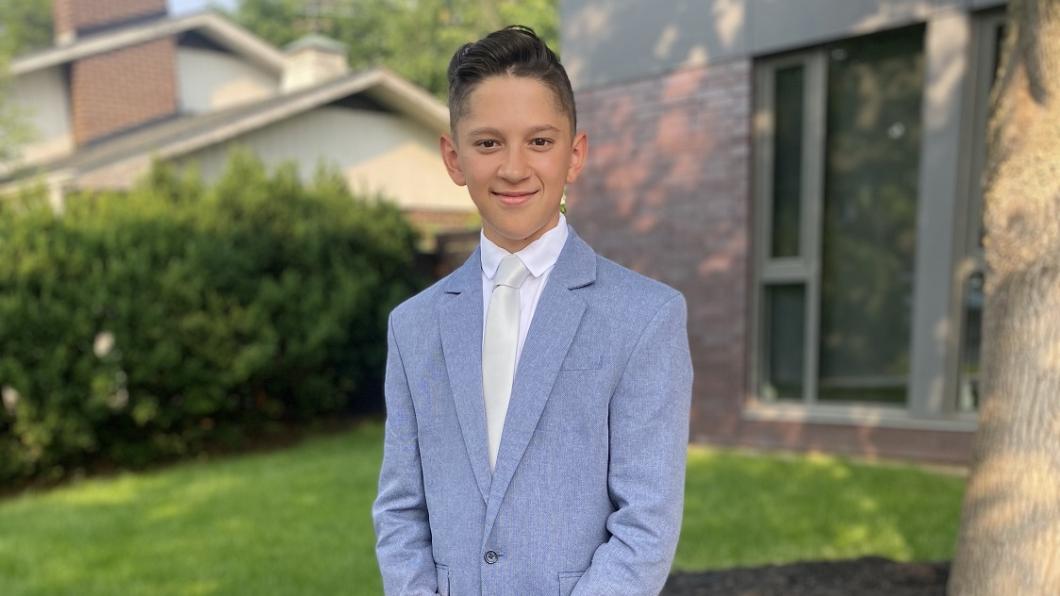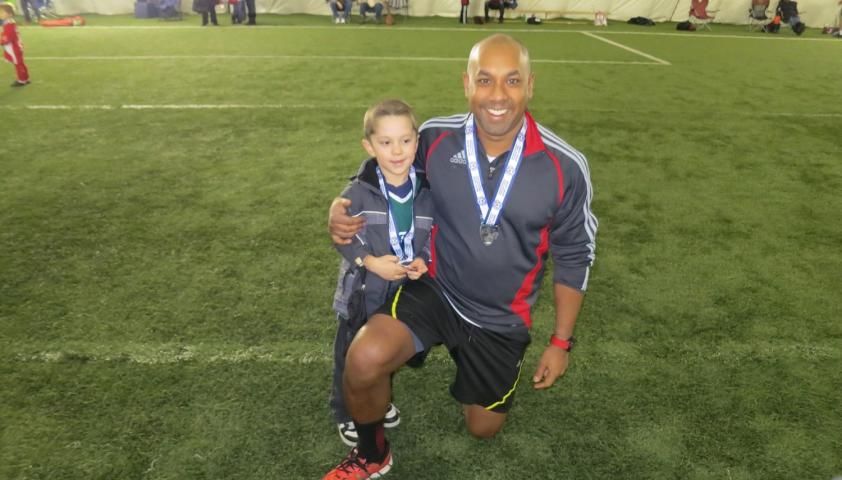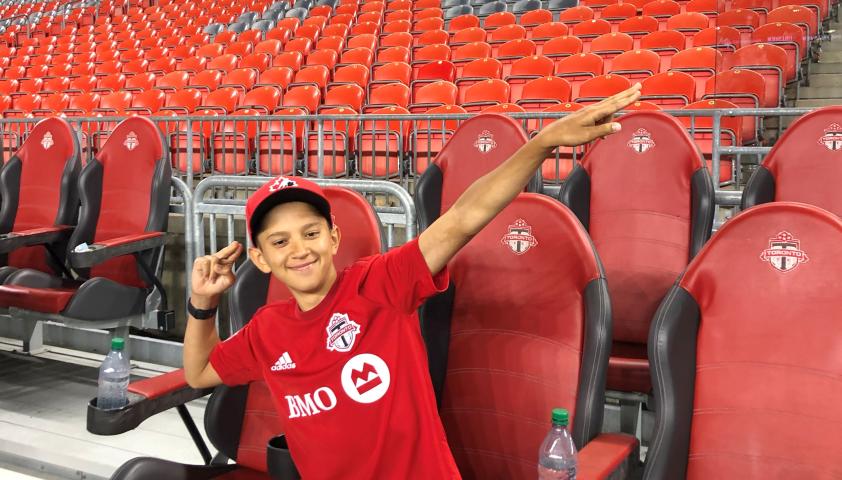
Shooting Pucks and Reaching Inclusion Goals
Including kids with disabilities in the classroom is easy, if you teach their classmates how to do it.
Pre-K
These days 14-year-old Carter is known for being an awesome teammate who's super social and chatty with his friends. His parents would never have guessed this to be the case when he was non-verbal and diagnosed with Autism Spectrum Disorder (ASD) at the age of two.
"Back then I didn't know what I was up against because autism wasn't spoken about in the way it is today,” says his mother Erika of those early days.
Shortly after his diagnosis Carter participated in a sibling study at Holland Bloorview and his parents learned about a program designed to coach parents in meeting their child's psychosocial goals.
"I could see families that were further down in the process. It was my saving grace," said his mom Erika.
The coaching and programs that Carter was part of at Holland Bloorview were game-changing for the family. Erika says that by co-creating Carter's treatment plan with his therapists at Holland Bloorview, he was able to achieve his developmental and socio-communicative goals at a much faster rate.
Since he was first diagnosed with ASD, Carter’s parents have been his biggest advocate. At school, they pushed for him to always be in an integrated setting in the classroom and beyond. “Our tendency is to split them up because it seems easier to deal with disability in isolation, but it ends up being such a long-term win [to keep kids together] because then you have a whole community supporting that child. We saw that in our community.”

Kindergarten
Erika pushed for her son’s intervention therapist to come and join his kindergarten classroom to teach his classmates how they could support and include Carter.
“The therapists worked more with his classmates than they did with Carter. When kids are that little, when a child isn’t acting a certain way, most kids would just shy away. But the intervention therapist would teach the kids to try things like asking questions again, which really helped to facilitate inclusion with his neuro-typical classmates. It was the biggest game-changer,” she said.
“When new kids would join the class his classmates would explain to them how they could support and include him,” Erika added.
Carter says that when he was younger the fact that he had autism didn’t really come up with his friends at school, but things have changed. These days, many of his classmates and hockey teammates often forget he has autism and he notices them making off-hand ableist comments.

Entering High-School and Dealing with Stigma
As he enters high school, Carter wishes that more kids knew that having autism isn't a "bad thing." While his elementary years were completely inclusive, as Carter has gotten older he’s had to renegotiate how his peers imagine and view what it means to have a disability.
Carter is a natural leader. During school projects he’s the one to keep things on track, making sure that his group is asking the right questions and the job is getting done. His ability to focus and adapt makes him a great team player on and off the field.
“All the boys in my class know about it [ASD] and make jokes about it, even if it’s not about me. It’s very annoying. Like why do you need to mention that someone is autistic?”
Carter mentioned that kids use the word ‘autism’ to describe anything from a speech impediment, to needing additional academic support, to doing a task wrong. The 14-year-old knows that in most cases his peers simply don’t know better, but he’s still impacted by the stigma. “I’m not what they picture in their heads when they think of autism. It’s just annoying that they have to label it and use it as a way to say that something’s bad.”
His mom Erika agrees that there's still a stigma among children and youth, which is often learned from the adults in their lives. As a mom, she worries about things like telling new coaches that he's on the spectrum, out of fear that he’ll be treated differently, or worse, not selected to join the team.

Back to School
As we head into the school year Carter has some advice on how to include kids with disabilities in the classroom and sports: “Teachers and coaches should know that if kids on the spectrum are struggling you might need to help them a bit.”
For Carter, this goes beyond autism. He wants people to know that not all kids with disabilities are the same. “Some kids will learn slower, or better with visual learning, or when things are hands on. If a coach tells me a new drill that’s all good, but if he shows me I’m like ok… I’ve got this!”
He also has amazing parents, therapists, and teachers who have really taken into consideration the best way to support his success. They have prioritized his inclusion in the classroom and beyond at every step, allowing him to become a true team player.